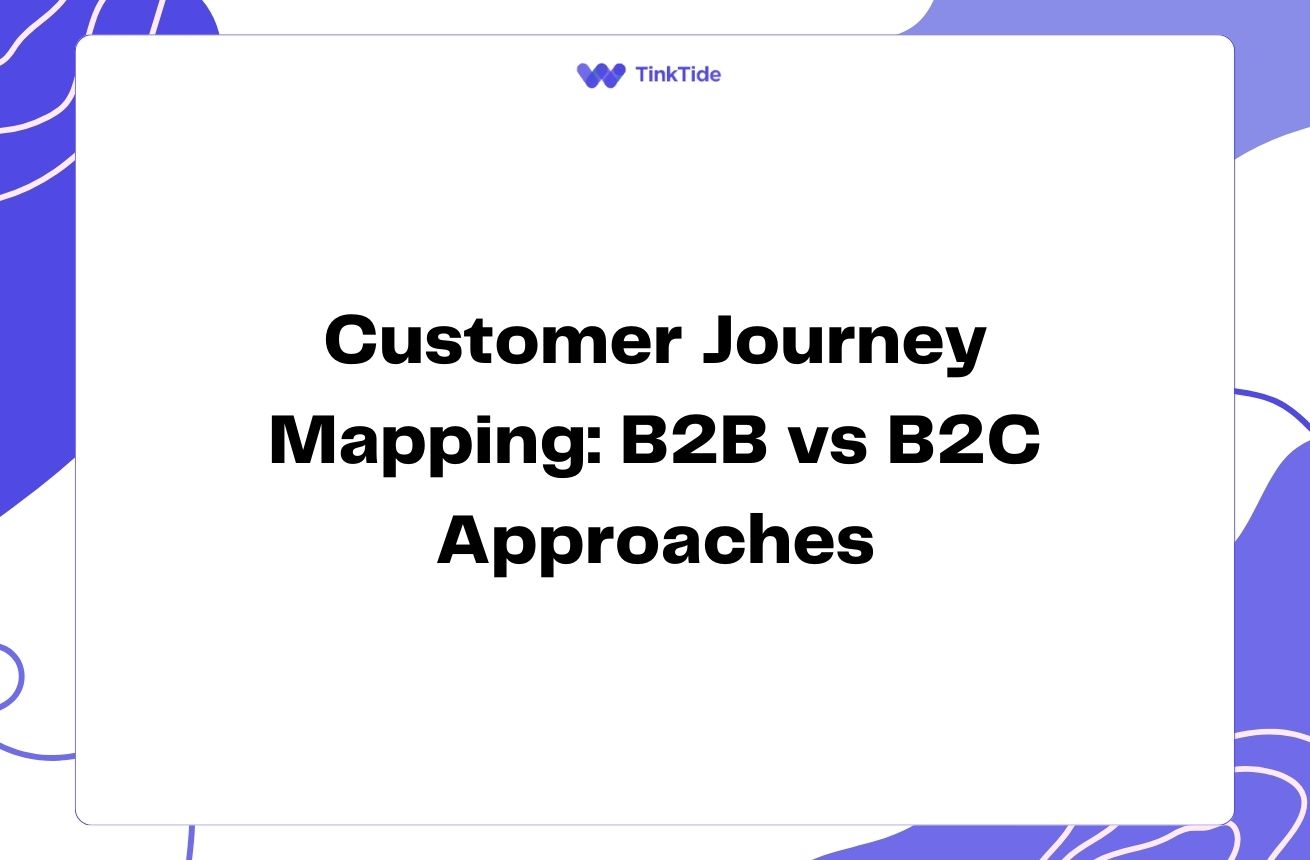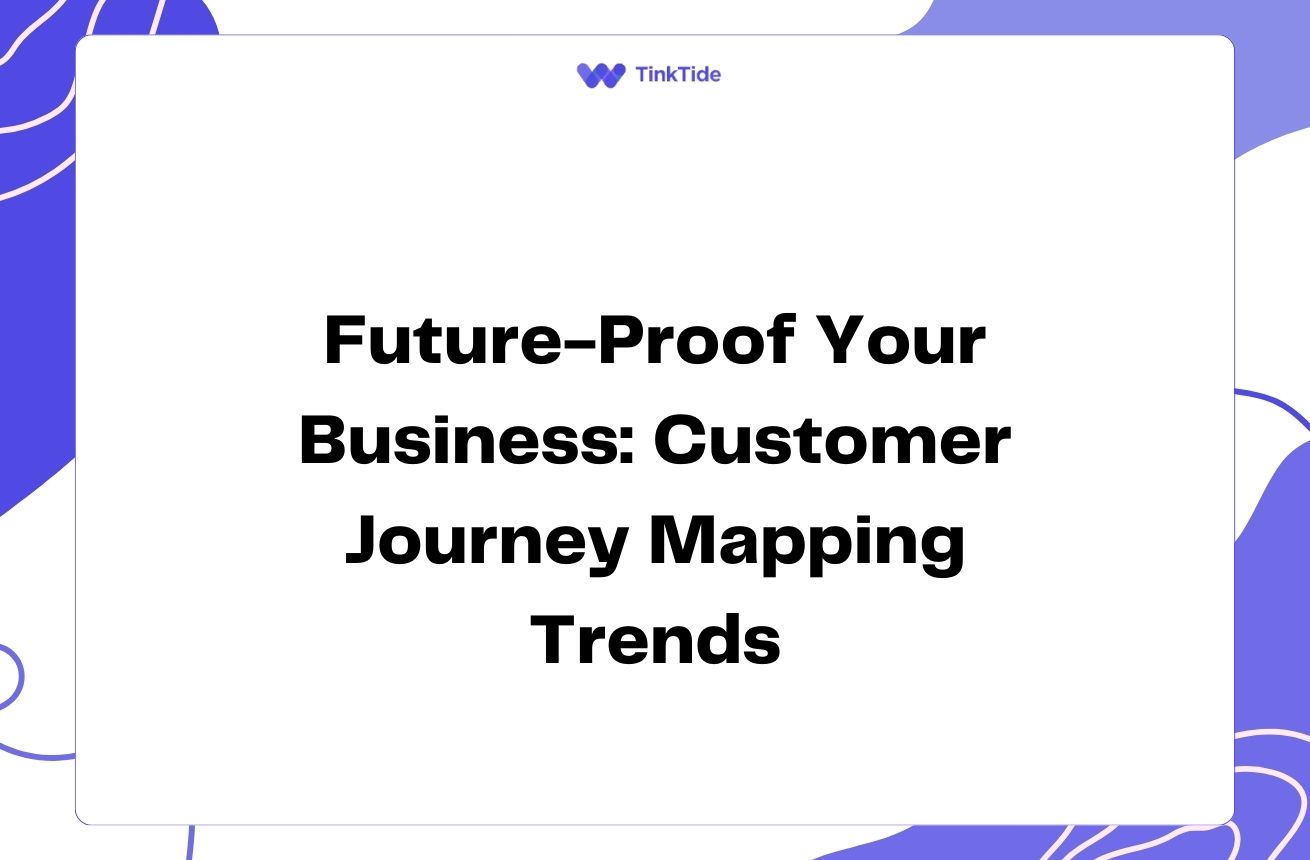Customer Journey Mapping: B2B vs B2C Approaches
Understanding Customer Journey Mapping
Customer journey mapping is a crucial tool for businesses to understand and optimize their customers' experiences. However, the approach differs significantly between B2B (Business-to-Business) and B2C (Business-to-Consumer) markets. Let's dive into these differences and explore how to tailor your mapping strategy for each.
At its core, customer journey mapping is about visualizing the steps a customer takes when interacting with your brand. This process helps identify pain points, opportunities for improvement, and touchpoints where you can add value. While the basic concept remains the same for both B2B and B2C, the execution and focus areas vary considerably.
In B2C markets, the journey often focuses on individual consumers making personal decisions. These journeys can be relatively short and emotionally driven. On the other hand, B2B journeys typically involve multiple stakeholders, longer decision-making processes, and more rational, ROI-focused considerations.
Understanding these fundamental differences is crucial for creating effective customer journey maps that drive business growth and customer satisfaction in your specific market context.
Key Differences in B2B and B2C Customer Journeys
To effectively map customer journeys, it's essential to understand the key differences between B2B and B2C markets. These differences influence how you approach the mapping process and what elements you focus on.
- Decision-making process: B2B decisions often involve multiple stakeholders and longer timelines, while B2C decisions are typically made by individuals or small family units.
- Emotional vs. rational factors: B2C purchases are often driven by emotions and personal preferences, whereas B2B decisions tend to be more rational and focused on business outcomes.
- Relationship duration: B2B relationships are usually long-term and focused on ongoing partnerships, while B2C relationships can be more transactional.
- Purchase value and frequency: B2B purchases are often high-value and less frequent, while B2C purchases can range from small, frequent transactions to occasional big-ticket items.
- Customization needs: B2B solutions often require significant customization, while B2C products are typically more standardized.
Mapping the B2B Customer Journey
When mapping a B2B customer journey, it's crucial to consider the complex decision-making process involved. Start by identifying all the key stakeholders in the buying process, which may include decision-makers, influencers, and end-users.
Focus on the extended timeline of B2B journeys. These often include stages like initial research, vendor comparison, proposal requests, negotiations, and post-purchase implementation. Each stage may involve different stakeholders and touchpoints.
Pay special attention to the information-gathering phase. B2B buyers often conduct extensive research before even contacting potential vendors. Your journey map should reflect this by including touchpoints like industry reports, peer recommendations, and online reviews.
Don't forget to map the post-purchase journey, including onboarding, training, and ongoing support. In B2B, the sale is often just the beginning of a long-term relationship. Tools like HubSpot's Customer Feedback Software can be valuable for gathering insights throughout this extended journey.
Crafting the B2C Customer Journey Map
B2C customer journey mapping typically focuses on individual consumers and their personal experiences. Start by creating detailed buyer personas to understand your target audience's motivations, preferences, and pain points.
Emphasize the emotional aspects of the journey. B2C decisions are often driven by feelings, desires, and personal values. Your map should reflect these emotional highs and lows throughout the customer's interaction with your brand.
Consider the multi-channel nature of B2C journeys. Consumers often switch between various touchpoints like social media, websites, physical stores, and customer service channels. Ensure your map captures this omnichannel experience.
Don't overlook the importance of post-purchase experiences in B2C. While the relationship might be more transactional, factors like product satisfaction, customer support, and loyalty programs play crucial roles in encouraging repeat purchases and brand advocacy. Tools like SurveyMonkey's Customer Satisfaction Surveys can help gather valuable feedback at this stage.
Data Collection and Analysis
Effective customer journey mapping relies heavily on data. However, the types of data and collection methods may differ between B2B and B2C contexts.
For B2B, focus on gathering detailed information about the decision-making process. This might involve conducting in-depth interviews with key stakeholders, analyzing sales cycle data, and reviewing customer relationship management (CRM) records.
In B2C, leverage a mix of quantitative and qualitative data. Use website analytics, social media insights, and purchase history data to understand customer behavior. Complement this with surveys, focus groups, and customer feedback to capture emotional aspects of the journey.
Both B2B and B2C can benefit from advanced analytics tools. For instance, Google Analytics can provide valuable insights into online customer behavior for both markets.
Steps to Create Effective Customer Journey Maps
While the specifics may vary, the general process of creating customer journey maps is similar for both B2B and B2C markets. Follow these steps to create effective maps:
- Define your objectives: Clearly outline what you aim to achieve with your journey map.
- Create buyer personas: Develop detailed profiles of your target customers.
- Identify touchpoints: List all the ways customers interact with your brand.
- Collect data: Gather information about customer experiences at each touchpoint.
- Map the journey: Visualize the customer's path, including actions, thoughts, and emotions.
- Identify pain points and opportunities: Analyze the map to find areas for improvement.
- Prioritize and act: Develop strategies to address issues and enhance the customer experience.
- Continuously update: Regularly revisit and refine your journey maps based on new data and insights.
Tools and Technologies for Journey Mapping
Numerous tools can assist in creating and analyzing customer journey maps. Some are better suited for B2B, while others excel in B2C contexts.
For B2B journey mapping, consider tools that integrate with your CRM system and allow for complex, multi-stakeholder journeys. Platforms like Salesforce Marketing Cloud offer robust features for B2B journey mapping and analysis.
In B2C, look for tools that can handle large volumes of data and provide real-time insights. Solutions like Adobe Experience Platform excel in creating detailed, data-driven B2C customer journey maps.
Regardless of your market focus, visualization tools like Lucidchart can be invaluable for creating clear, shareable journey maps that bring your data to life.
Address common questions
Let's address some frequently asked questions about customer journey mapping in B2B and B2C contexts:
How often should I update my customer journey maps?
For both B2B and B2C, it's recommended to review and update your journey maps at least annually. However, B2C markets may require more frequent updates due to rapidly changing consumer trends. B2B journey maps might need updates when there are significant changes in the industry or your product offerings.
Can I use the same journey mapping tool for both B2B and B2C?
While some tools can be used for both, it's often more effective to use specialized tools. B2B journey mapping tools typically need to handle complex, multi-stakeholder journeys, while B2C tools often focus on processing large volumes of consumer data and providing real-time insights.
How do I measure the success of my customer journey mapping efforts?
Success metrics can vary between B2B and B2C. In B2B, you might look at metrics like sales cycle length, customer lifetime value, and retention rates. For B2C, focus on metrics such as customer satisfaction scores, conversion rates, and average order value. In both cases, improvements in these metrics after implementing journey map insights indicate success.
Should I create separate journey maps for different products or services?
In B2B, it's often beneficial to create separate journey maps for different products or services, especially if they target different industries or decision-makers. In B2C, you might create different maps for various customer segments or product categories, particularly if the purchase processes differ significantly.
How do I incorporate customer feedback into my journey maps?
For B2B, conduct regular interviews with key clients and incorporate their feedback directly into your maps. In B2C, use surveys, social media listening, and customer service data to gather feedback at scale. Both approaches should use this feedback to continuously refine and update journey maps.
Can AI and machine learning improve customer journey mapping?
Yes, AI and machine learning can significantly enhance journey mapping in both B2B and B2C contexts. These technologies can help predict customer behavior, personalize experiences, and identify patterns that humans might miss. However, the application may differ - B2B might use AI for lead scoring and account-based marketing, while B2C could leverage it for real-time personalization and predictive analytics.
Provide additional resources
B2B Customer Journey Mapping Guide
Comprehensive guide on B2B journey mapping from Gartner
B2C Customer Journey Mapping Best Practices
McKinsey's insights on mapping the B2C customer decision journey
Customer Journey Mapping Tools Comparison
G2's comparison of top customer journey mapping tools
The ROI of Customer Journey Mapping
Forrester's report on the business impact of journey mapping
Customer Journey Analytics
Gartner's glossary entry on customer journey analytics
Summarize key takeaways
Understanding the differences between B2B and B2C customer journey mapping is crucial for creating effective strategies. B2B journeys are typically longer, involve multiple stakeholders, and focus on rational decision-making. B2C journeys, on the other hand, are often shorter, emotionally driven, and centered around individual consumers.
Regardless of your market focus, customer journey mapping is an invaluable tool for improving customer experience, streamlining processes, and driving business growth. By tailoring your approach to the specific needs of your market - whether B2B or B2C - you can create more accurate, insightful, and actionable journey maps.
Remember, journey mapping is not a one-time exercise. Continuously gather data, seek feedback, and refine your maps to stay aligned with evolving customer needs and market trends. By doing so, you'll be well-positioned to deliver exceptional experiences that drive customer satisfaction and business success.
Optimize Your Customer Journey Today
Ready to transform your customer experience? Start mapping your customer journey with our powerful tools and expert guidance.
Start Your Free Trial
